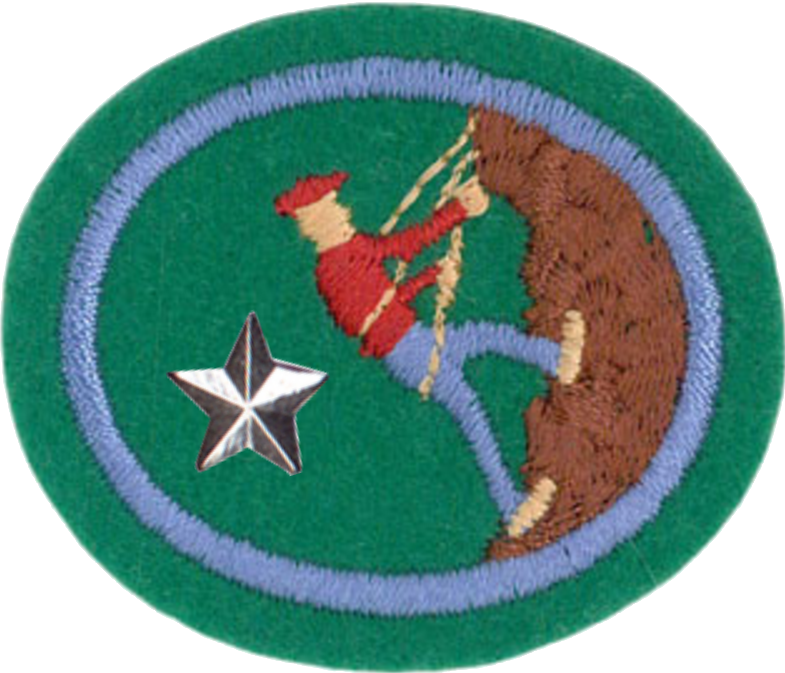AY Honors/Rock Climbing - Advanced
| Rock Climbing - Advanced | |
|---|---|
| Recreation | |
Skill Level 123 | |
Approval authority General Conference | Year of Introduction 1970 |
AY Honors/Rock Climbing - Advanced/Overview/en
The most challenging requirement of this honor is probably this:
7. Participate in at least two multi-pitch climbs of 5.5 (F5) difficulty or above, involving at least 120 feet (36.6 meters) of climbing each and leading at least two of the pitches.
1. Have the Rock Climbing honor.
2. Know and demonstrate the use of all special rock climbing equipment, such as bongs, RURP's, knife blades, bolt equipment, hero loops, runners, etriers, and mechanical ascenders.
3. Show how to use all free climbing moves, including: foot edging; finger-tip clings; lay backs; hand, arm, foot, and leg jamming; and stimming while climbing at 5.6(F6) difficulty on practice cliffs using an upper belay.
4. Show how to belay properly and safely a lead climber. Show that you can catch a falling lead climber during a practice fall.
5. Show how to lead and follow (by jumaring) a continuous Class 5 point 6 direct aid pitch of A2 difficulty of at least 20 feet (6.1 meters).
6. Show how to raise and lower, using only normal climbing equipment, an injured climber safely and relatively comfortably. Construct a rope litter and demonstrate its proper use.
7. Participate in at least two multi-pitch climbs of 5.5 (F5) difficulty or above, involving at least 120 feet (36.6 meters) of climbing each and leading at least two of the pitches.
8. Select a minimum of bivouac equipment, including food for a supper and break- fast, and spend one night bivouacked on a rock ledge at least 30 feet (9.1 meters) high and reached by moderate climbing, hauling equipment up by proper rope hauling methods.
9. Demonstrate basic map and compass use. Explain how the map can be useful to the rock climber and how to determine compass bearing from the map.
1
For tips and instruction see Rock Climbing.
2
3
4
5
6
7
8
9
References

